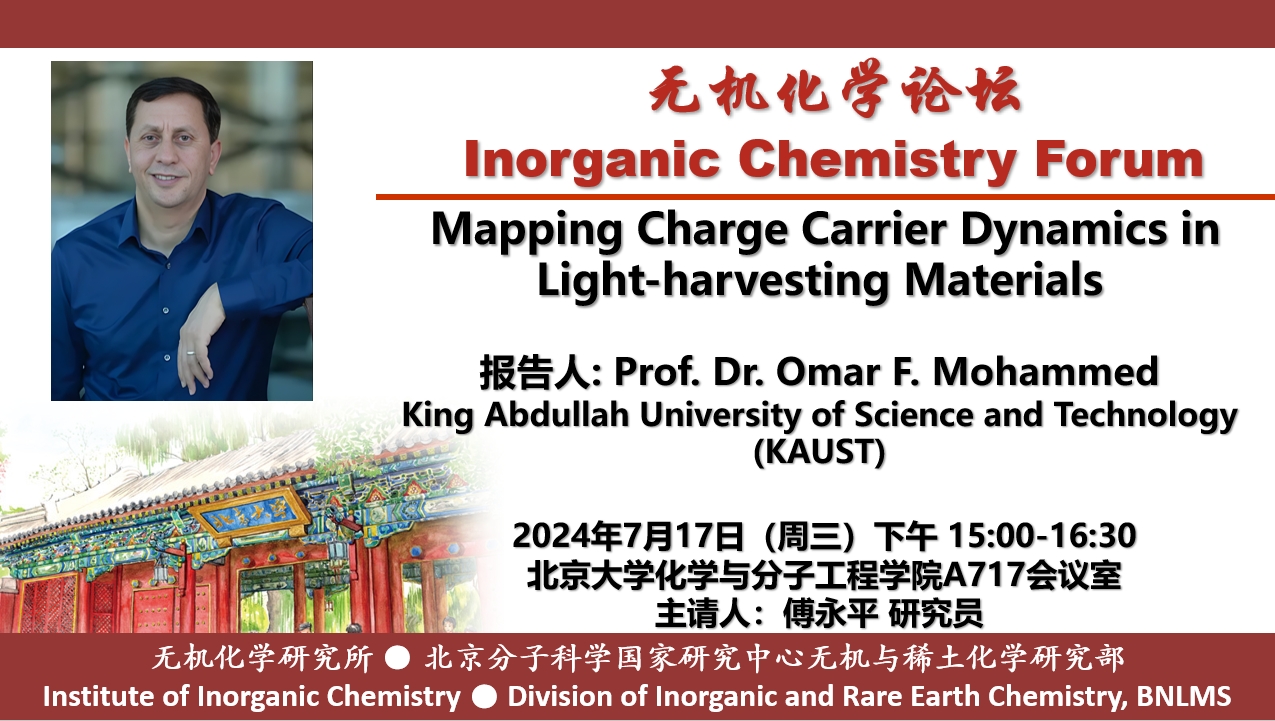Speaker: Prof. Dr.Omar F. Mohammed, King Abdullah University of Science and Technology (KAUST)
Time: 15:00-16:30 p.m., July 17, 2024, GMT+8
Venue: A717, CCME, PKU
Abstract:
The separation and collection of photo-generated charge carriers in light-harvesting devices are limited by the losses and ambiguous dynamical events at the surfaces and interfaces of the absorber layers.1-3 These events occur in ultrafast time scales and can only be visualized selectively in space and time by scanning ultrafast electron microscopy (the sole technique capable of surface-selective visualization of light-triggered carrier dynamics at nanometer and femtosecond scales). In this method, the surface of the photoactive materials is excited by a clocking optical pulse and the photo-induced changes will be directly imaged using a pulsed electron beam that generate secondary electrons with a couple of electron volts energy, which are emitted from the very top surface of the material in a manner that is extremely sensitive to the localization of the electron and hole on the photoactive material surfaces. This powerful technique along with ultrafast laser spectroscopy allow us to directly and precisely investigate and decipher the trajectory of charge carriers on materials surfaces and interfaces in real space and real time. Through this work, we have optimized the properties of photoactive materials for applications in light-harvesting devices that led to the world-record solar cell devices based on perovskite crystals. Moreover, we have clearly demonstrated in space and time how the surface orientations, surface oxidation and passivation can significantly impact the overall dynamical processes of photo-generated charge carriers in optoelectronic materials.4-5 Finally, I will talk about our recent ground-breaking work in X-ray imaging technology that include cutting-edge materials discovery, heavy-atom engineering, state-of-the-art characterization and efficient (nearly 100%) interfacial energy transfer between sensitizers and scintillators that has led to the development of novel X-ray imaging screens with outstanding sensitivity, ultralow detection limit, unprecedented spatial image resolution and low-cost fabrication, with potential applications in medical imaging, industrial monitoring and security screenings.
Source: College of Chemistry and Molecular Engineering, PKU
